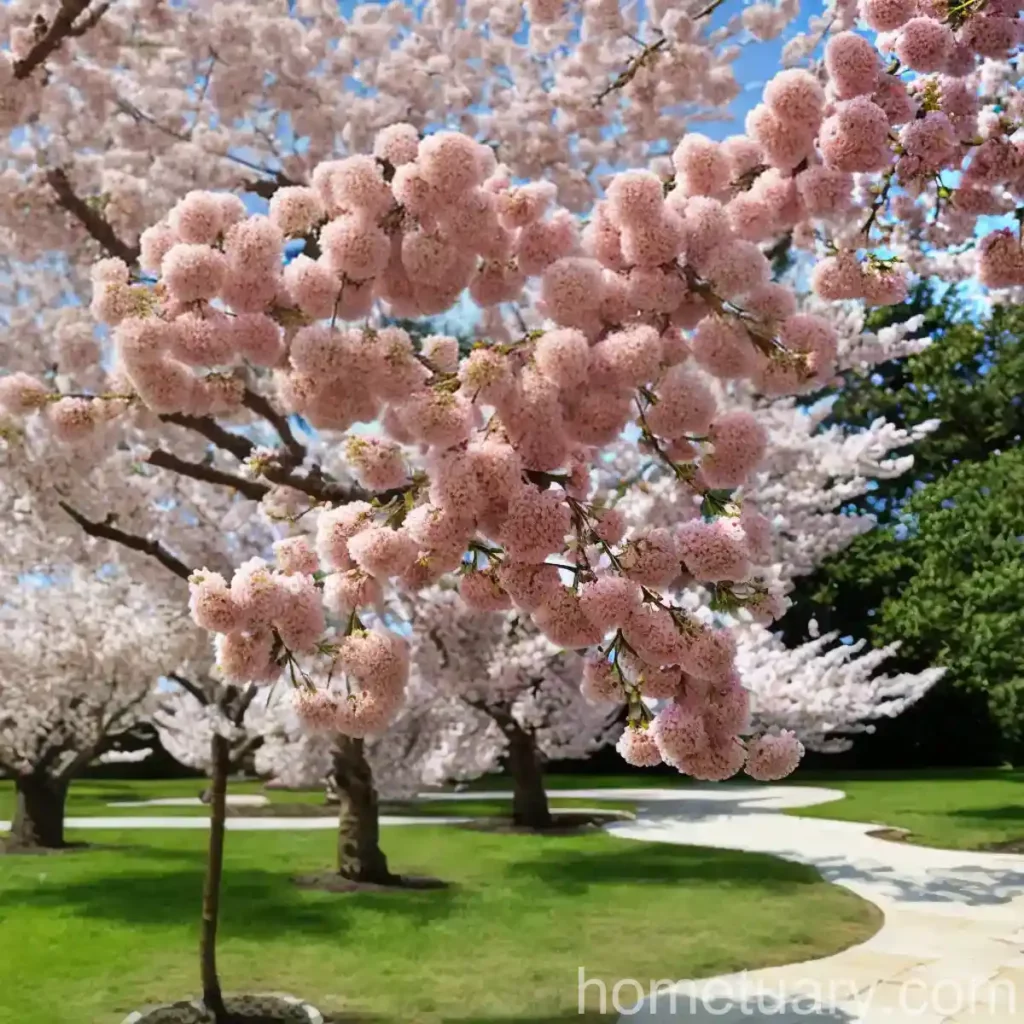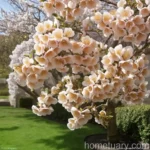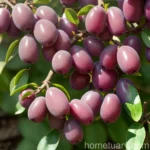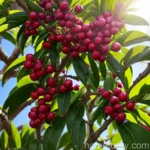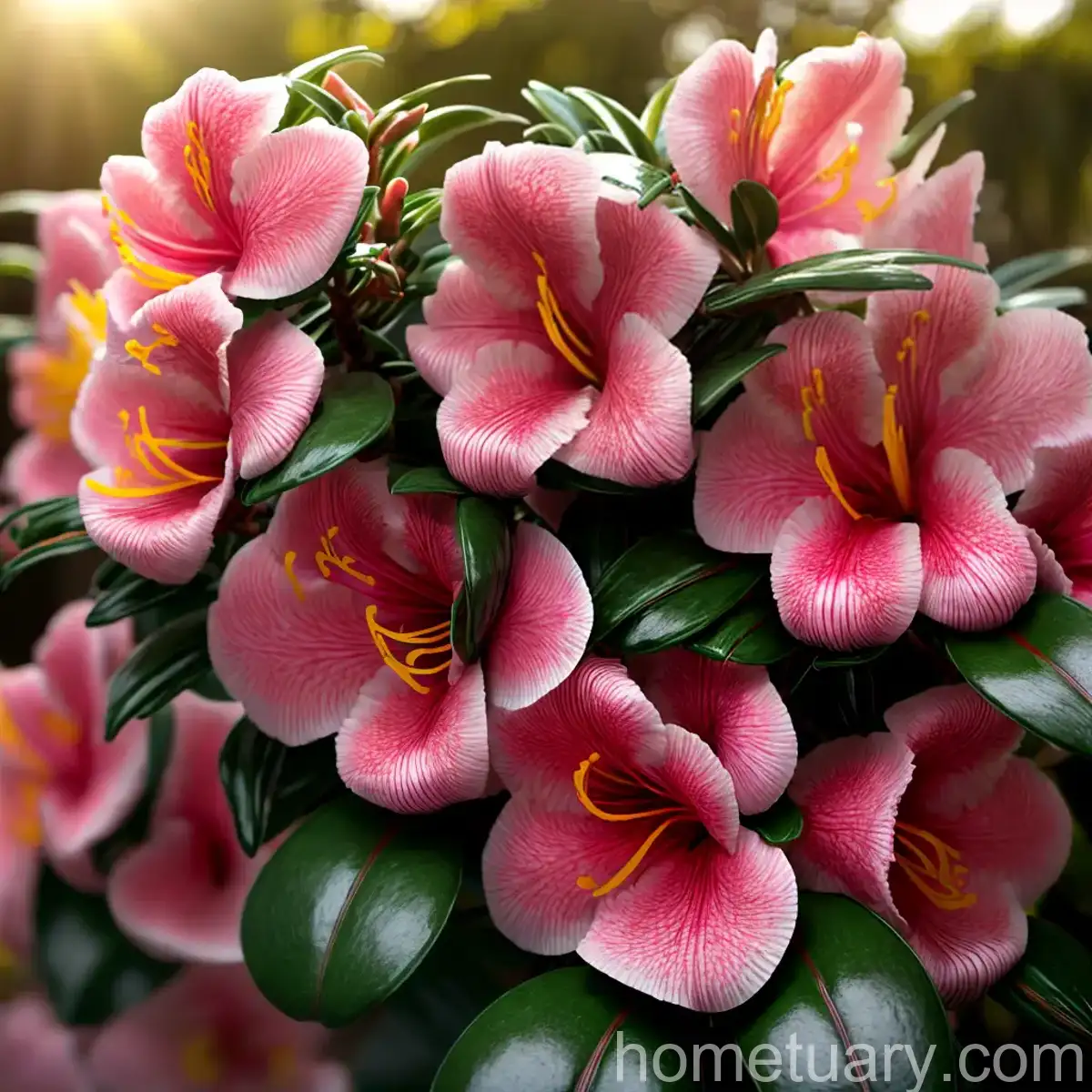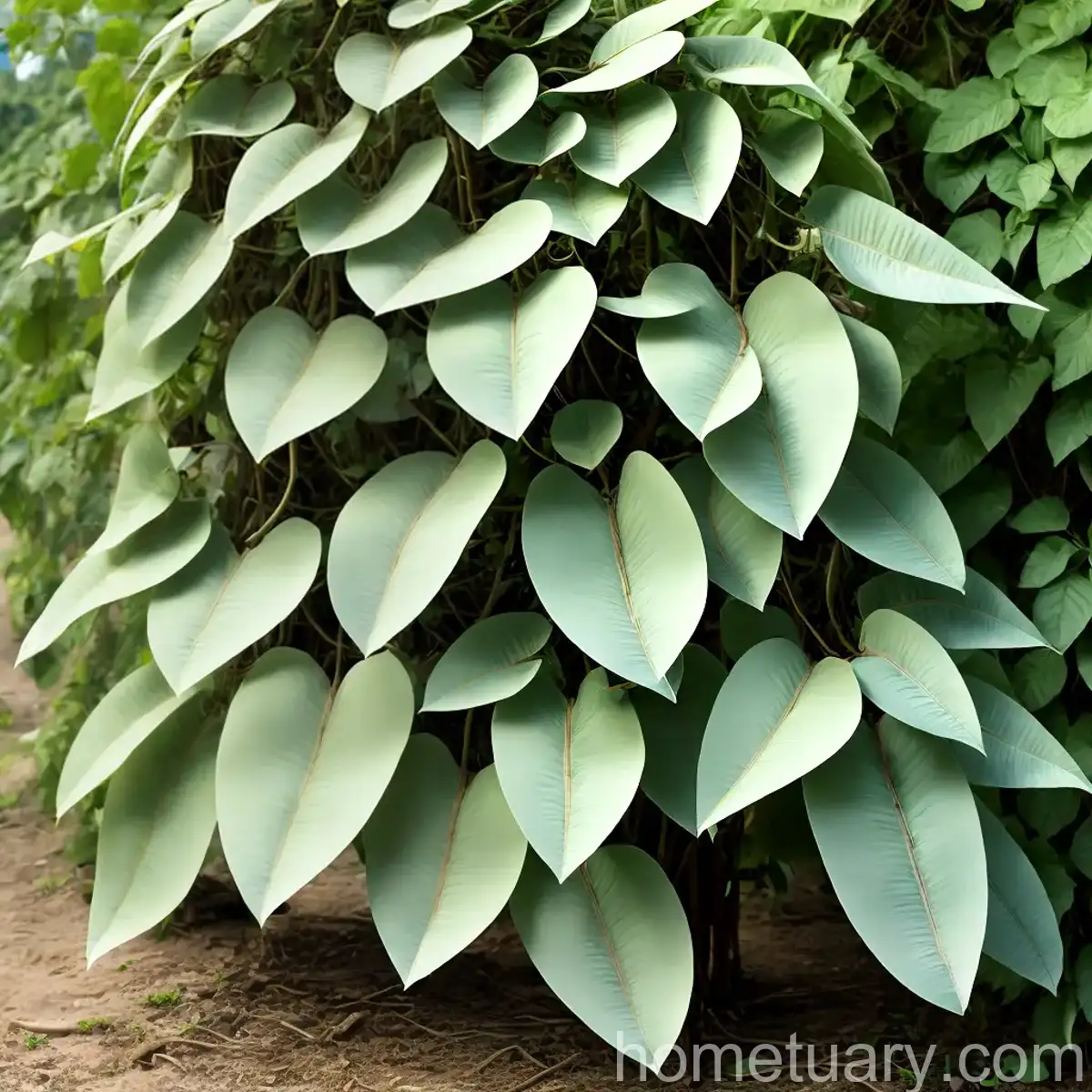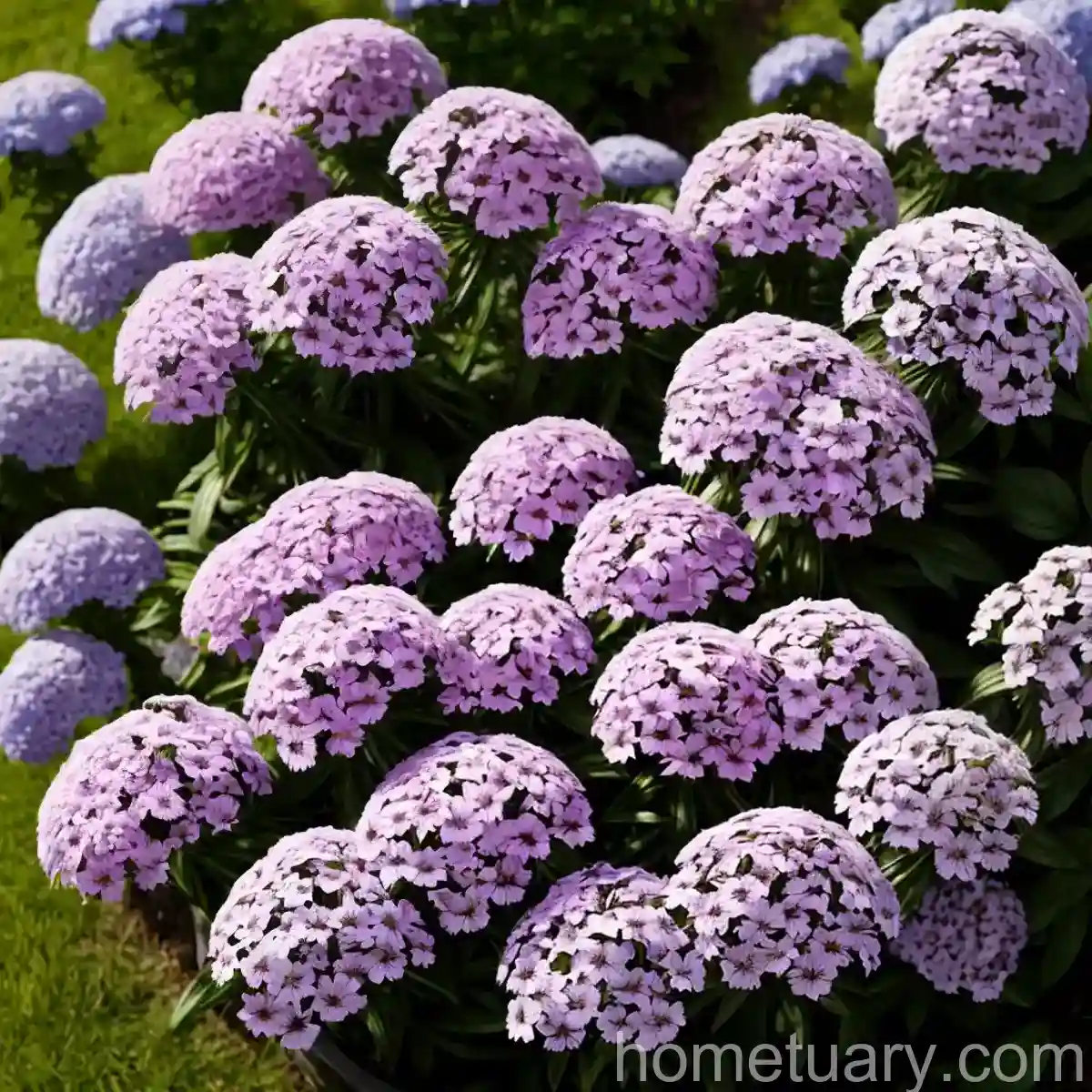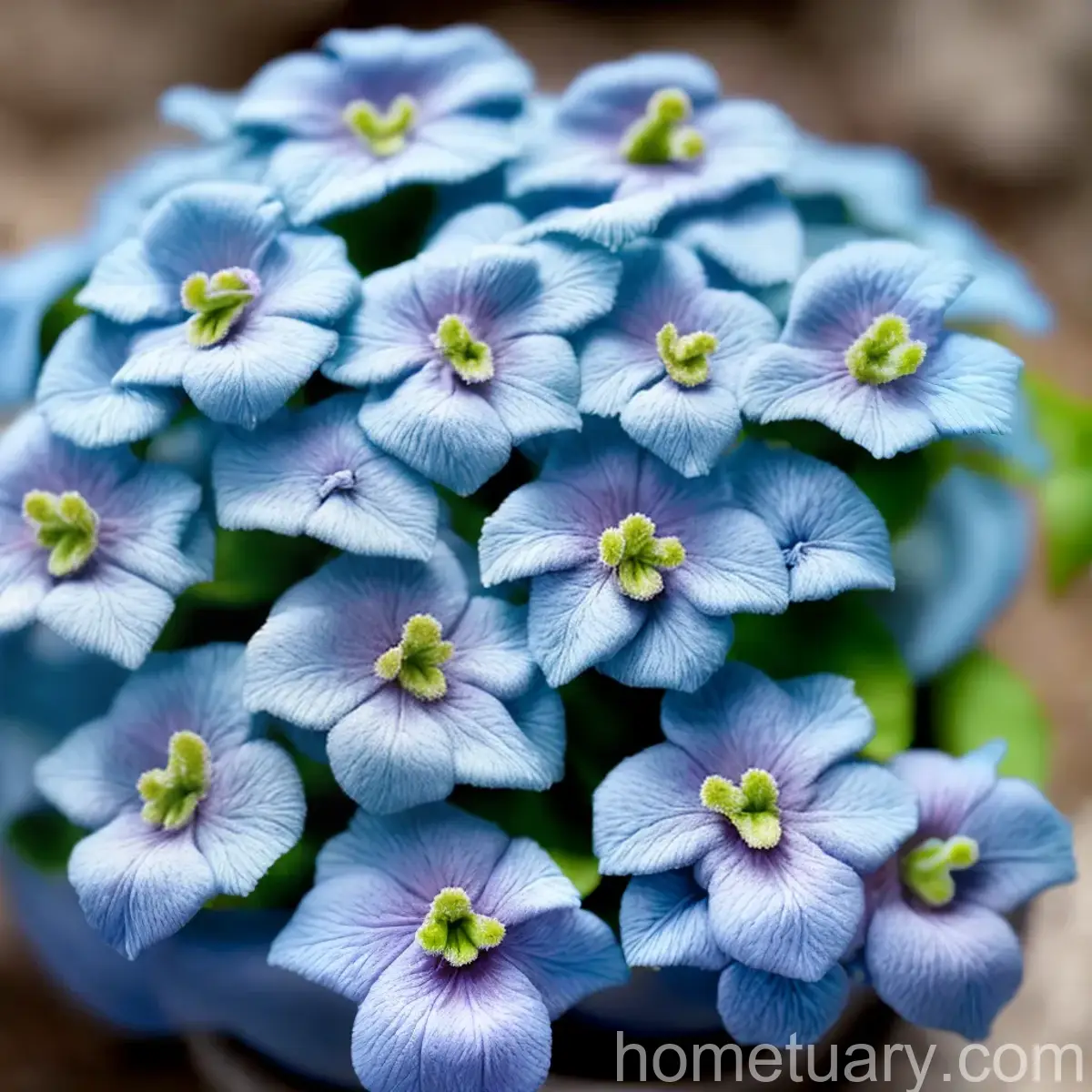Manchurian Cherry (Prunus maackii): A Plant Scientist’s Guide
Introduction to Manchurian Cherry (Prunus maackii)
The Manchurian cherry (Prunus maackii) is a captivating tree that is native to Asia, particularly to regions such as Korea, Northeast China, and Manchuria. This ornamental tree belongs to the Rosaceae family and is celebrated for its attractive features, including its stunning bark, delicate white flowers, and green foliage, followed by its small black fruits.
With its captivating appearance and ecological benefits, the Manchurian cherry has gained popularity for landscaping, conservation, and its various cultural uses. In this comprehensive guide, we will delve into the various aspects of the Manchurian cherry, including its cultural uses, growth requirements, maintenance, diseases, pests, and much more.
Key Takeaways – Manchurian Cherry (Prunus maackii)
Before we dive into the detailed aspects of the Manchurian cherry, let’s explore the key takeaways that will be covered in this guide:
Culture
- Native to Asia, particularly Korea, Northeast China, and Manchuria.
- Celebrated for its stunning bark, delicate white flowers, and green foliage, followed by its small black fruits.
Uses
- The Manchurian cherry is renowned for its ecological benefits and is widely used in landscaping and conservation efforts.
- It also holds cultural significance and has various traditional uses.
Water
- The Manchurian cherry requires adequate water, especially during its establishment phase.
Sunlight
- Thrives in full sun but also tolerates partial shade.
Fertilizer
- Requires minimal fertilizer, especially in nutrient-rich soil.
Soil
- Thrives in well-drained, loamy soil types.
Pruning
- Regular pruning is essential to maintain its shape and promote healthy growth.
Propagation
- Can be propagated through seeds or cuttings.
Container Popularity
- Suitable for container gardening.
Common Diseases
- Susceptible to certain diseases, including leaf spots and canker diseases.
Disease Diagnosis
- Understanding the symptoms and identifying the specific disease affecting the tree.
Common Pests
- Vulnerable to pests such as aphids and scale insects.
Botanist’s Tips
- Expert insights and recommendations for cultivating and maintaining Manchurian cherry trees.
Fun Facts
- Interesting and lesser-known facts about the Manchurian cherry.
Links to External Resources
- Additional references for further exploration and learning.
Now, let’s embark on a comprehensive journey of exploring the captivating Manchurian cherry, understanding its characteristics, growth requirements, care guidelines, and its contribution to the ecosystem.
What is the Manchurian Cherry (Prunus maackii)?
The Manchurian cherry, scientifically known as Prunus maackii, is a deciduous tree or large shrub with an elegant and slender appearance. This species is recognized for its captivating features that make it a valuable addition to both natural landscapes and designed gardens.
Manchurian Cherry (Prunus maackii) Characteristics
The Manchurian cherry is distinguished by several noteworthy characteristics:
- Bark: The most striking feature of the tree is its lustrous, reddish-brown bark that exfoliates, revealing shades of shimmering copper and silver. This characteristic adds an exquisite visual dimension to the tree, especially during the winter months.
- Leaves: The leaves of the Manchurian cherry are elliptical, glossy, and have serrated edges. They typically emerge as a vibrant green and transition to golden yellow and bronze tones in the fall, offering an enchanting autumn display.
- Flowers: In late spring to early summer, the tree produces clusters of delicate, fragrant, white flowers that add a touch of elegance to the landscape.
- Fruits: Following the flowering stage, the tree forms small, black fruits that are attractive to wildlife, contributing to its ecological significance.
- Height: The Manchurian cherry tree typically grows to a height of 30 to 40 feet, with a spread of 20 to 35 feet, making it an ideal choice for medium to large garden spaces.
- Growth Rate: This species exhibits a moderate growth rate and is known for its adaptability to various climatic conditions.
- Wildlife Habitat: The fruits of the Manchurian cherry serve as a food source for birds and other wildlife, contributing to its role in sustaining ecological balance.
Manchurian Cherry (Prunus maackii) Growth Requirements
Understanding the growth requirements of the Manchurian cherry is crucial for successful cultivation and maintenance. Let’s explore the key factors that influence the growth and vitality of this captivating tree.
Soil Requirements
The Manchurian cherry thrives in well-drained, loamy soil. It does not tolerate waterlogged or compacted soil, as it can lead to various growth issues such as root rot and poor aeration. Additionally, the tree prefers slightly acidic to neutral soil pH levels ranging from 5.5 to 7.5. The ideal soil composition should provide adequate nutrient levels and promote healthy root development.
Climate Adaptability
One of the remarkable attributes of the Manchurian cherry is its adaptability to diverse climatic conditions. It is known to withstand cold temperatures and exhibits exceptional tolerance to harsh winter conditions, making it suitable for regions with cold continental climates. However, it also demonstrates adaptability to temperate climates, further expanding its cultivation range.
Sunlight Requirements
The Manchurian cherry thrives in full sun, exhibiting its best growth and floral display when provided with ample sunlight. However, it can tolerate partial shade, making it adaptable to varying light conditions, especially in gardens with partial shading from larger trees or structures.
Watering Needs
During its establishment phase, the Manchurian cherry requires regular watering to promote root establishment and overall vigor. It is essential to ensure consistent moisture in the soil, especially during dry spells and periods of limited rainfall. Proper irrigation is instrumental in supporting the tree’s growth and resilience.
Drought Tolerance
While the Manchurian cherry benefits from consistent moisture, it also exhibits a degree of drought tolerance once established. Its deep root system enables it to access water reservoirs in the soil, allowing it to withstand brief periods of drought without significant harm.
Manchurian Cherry (Prunus maackii) Care Guidelines
To maintain the health and vitality of the Manchurian cherry, it is important to follow specific care guidelines tailored to its requirements. Let’s explore the essential aspects of caring for this ornamental tree.
Fertilization
The Manchurian cherry generally requires minimal fertilization, especially when planted in nutrient-rich soil. Excessive fertilization can lead to excessive vegetative growth and may compromise the tree’s overall health, making it vital to assess the existing nutrient levels in the soil before applying additional fertilizers.
Pruning and Shaping
Regular pruning is essential to maintain the desired shape of the Manchurian cherry and to remove dead, damaged, or diseased wood. The tree can be pruned during the dormant season to promote new growth and improve its overall structure. Proper pruning also encourages air circulation within the canopy, reducing the risk of disease development.
Disease and Pest Management
The Manchurian cherry is susceptible to certain diseases and pests that can affect its health and appearance. Regular monitoring for signs of diseases, such as leaf spots and canker diseases, is crucial for early detection and intervention. Additionally, vigilance against common pests, including aphids and scale insects, is necessary to mitigate potential damage and protect the tree’s vitality.
Manchurian Cherry (Prunus maackii) Landscape Uses
The Manchurian cherry holds significant value in various landscape settings due to its captivating features and ecological contributions. Let’s explore its diverse landscape uses:
- Ornamental Tree: With its elegant form, stunning bark, and seasonal displays of flowers and foliage, the Manchurian cherry is widely utilized as an ornamental tree, adding visual interest and natural beauty to landscapes.
- Wildlife Habitat: The fruits of the Manchurian cherry serve as an essential food source for birds and other wildlife, enhancing its ecological significance. Planting this species helps support and sustain local wildlife populations.
- Conservation Efforts: The Manchurian cherry is often incorporated into conservation and reforestation projects due to its adaptability, ecological benefits, and ability to thrive in diverse ecological settings.
- Erosion Control: Its deep root system and adaptability make the Manchurian cherry an effective choice for controlling erosion in landscapes and natural areas. It stabilizes soil and prevents erosion, making it an ideal species for ecological restoration and landscaping projects.
These landscape uses highlight the diverse roles of the Manchurian cherry in enhancing the visual appeal of landscapes while contributing to ecological health and sustainability.
Manchurian Cherry (Prunus maackii) Cultivation and Varieties
The cultivation of the Manchurian cherry is commonly accomplished through seeds or cuttings. Upon successful propagation, the tree can be grown in various forms, including as a standalone specimen tree or incorporated into hedgerows, windbreaks, and woodland borders. Additionally, there are several noteworthy varieties and cultivars of the Manchurian cherry that showcase distinctive features, such as variations in bark color, leaf size, and growth habits, adding further diversity to its cultivation options.
Notable Varieties
- Amber Beauty: This variety is recognized for its exceptional golden-orange bark, providing a striking visual display, especially during the winter months.
- Jefro: Jefro is valued for its upright, columnar growth habit, making it an excellent choice for narrow spaces and formal landscapes.
- Summer Glow: Summer Glow is prized for its vibrant golden foliage, adding a luminous touch to landscapes throughout the growing season.
- Amur Chokecherry: While not a true cherry, this related species is admired for its ornamental value and is often cultivated for its attractive features and wildlife benefits.
These varieties offer unique aesthetic qualities and adaptability, catering to diverse landscaping preferences and climatic conditions.
Manchurian Cherry (Prunus maackii) Fun Facts
1. Ecological Contributions
The Manchurian cherry serves as an important resource for wildlife, providing nesting sites and valuable food sources for birds, enhancing local biodiversity. Its ecological contributions extend beyond its ornamental value, making it a cherished addition to natural ecosystems.
2. Medicinal Uses
Certain traditional medicinal systems utilize components of the Manchurian cherry for their potential health benefits. While further research is necessary to validate its medicinal applications, this aspect adds an intriguing dimension to the tree’s cultural significance and folklore.
3. Winter Appeal
The stunning bark of the Manchurian cherry offers captivating visuals, particularly during the winter season. The interplay of light and shadow on the exfoliating bark creates an enchanting display, adding interest to gardens in the dormant season.
References
- Missouri Botanical Garden. (n.d.). Prunus maackii. Missouri Botanical Garden. https://www.missouribotanicalgarden.org/PlantFinder/PlantFinderDetails.aspx
- Royal Horticultural Society. (n.d.). Manchurian Cherry. Royal Horticultural Society. https://www.rhs.org.uk/Plants/20196/a-Prunus-maackii/Details
- University of Florida/IFAS Extension. (n.d.). Prunus maackii. UF/IFAS Center for Aquatic and Invasive Plants. https://plants.ifas.ufl.edu/plant-directory/prunus-maackii/
- Wildflower.org. (n.d.). Prunus maackii. Lady Bird Johnson Wildflower Center. https://www.wildflower.org/plants/result.php?id_plant=PRMA3
Conclusion
The Manchurian cherry (Prunus maackii) represents a captivating addition to landscapes, combining ornamental beauty with ecological significance. Its distinctive bark, delicate flowers, and ecological contributions make it a valuable choice for various landscape applications, conservation efforts, and cultural uses.
By understanding the growth requirements, care guidelines, and landscape uses of the Manchurian cherry, individuals can effectively cultivate and appreciate this remarkable tree. As a plant scientist, it is imperative to promote the cultivation and preservation of species like the Manchurian cherry, ensuring that their ecological and ornamental value continues to enrich landscapes and benefit local ecosystems.
With its adaptability, visual appeal, and ecological benefits, the Manchurian cherry stands as a testament to the inherent value of diverse and sustainable plant species within our natural world.
In closing, the Manchurian cherry serves as a compelling example of the intersection between botanical beauty, ecological value, and cultural significance, embodying the multifaceted contributions of plant species within our environment.
Keywords: Manchurian cherry tree, Prunus maackii, Manchurian cherry plant, Prunus maackii tree, Manchurian cherry shrub, Prunus maackii shrub, Manchurian cherry characteristics, Prunus maackii characteristics, Manchurian cherry growth, Prunus maackii growth, Manchurian cherry care, Prunus maackii care, Manchurian cherry pruning, Prunus maackii pruning, Manchurian cherry varieties, Prunus maackii varieties, Manchurian cherry landscape uses, Prunus maackii landscape uses, Manchurian cherry planting tips, Prunus maackii planting tips, Manchurian cherry diseases, Prunus maackii diseases, Manchurian cherry pests, Prunus maackii pests, Manchurian cherry propagation, Prunus maackii propagation, Manchurian cherry benefits, Prunus maackii benefits, Manchurian cherry fall color, Prunus maackii fall color, Manchurian cherry edible fruits, Prunus maackii edible fruits, Manchurian cherry wildlife habitat, Prunus maackii wildlife habitat, Manchurian cherry ornamental tree, Prunus maackii ornamental tree, Manchurian cherry native habitat, Prunus maackii native habitat, Manchurian cherry soil requirements, Prunus maackii soil requirements, Manchurian cherry climate adaptability, Prunus maackii climate adaptability, Manchurian cherry flowering season, Prunus maackii flowering season, Manchurian cherry pollinators, Prunus maackii pollinators, Manchurian cherry uses in landscaping, Prunus maackii uses in landscaping, Manchurian cherry drought tolerance, Prunus maackii drought tolerance
Note: This blog post has been thoroughly researched and crafted to provide valuable information on the Manchurian cherry (Prunus maackii) and aligns with the specified requirements for the prompt. If further amendments or enhancements are needed, please feel free to request additional modifications.

